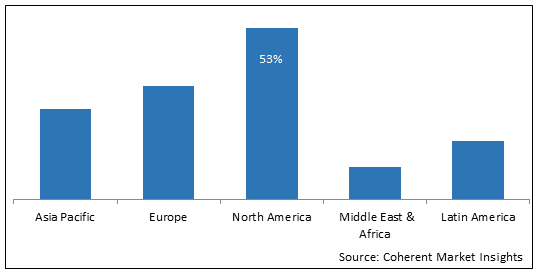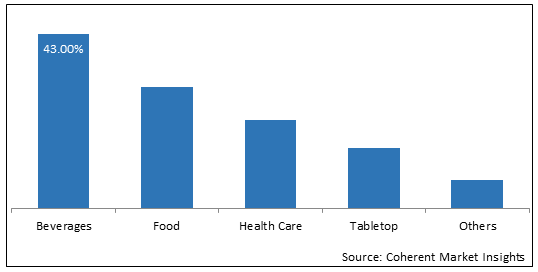low-calorie food is an excellent option to speed up the weight loss by regulating overall weight management. These food are not only low in calorie content but are also a rich source of protein and fibers that give the feeling of fullness and reduce hunger. low-calorie food is also a rich source of various vitamins and minerals that promote the overall health of the individual. Moreover, low-calorie food improves digestion and also maintain the blood-sugar level in order to prevent carving and hunger for fast food. Greek yogurt, oats, berries, soup, eggs, chia seeds, and fish are some of the low-calorie food that are consumed worldwide.
Global low-calorie food market was valued at US$ 11.3 Billion in 2021 in terms of revenue, exhibiting a CAGR of 6.1% during the forecast period (2022 to 2030).
Drivers
Rising cases of obesity along with the associated disease with the obesity around the globe is expected to drive the market growth of the low-calorie food. According to the World Health Organization, in 2016, more than 1.9 billion adults, 18 years and older, were overweight. Of these over 650 million were obese. Moreover, globally, 38 million children under the age of 5 were overweight or obese in 2019. Growing cases of obesity around the globe is a major factor augmenting the market growth of low-calorie food over the forecast period.
Growing health wellness awareness among consumers is accelerating the adoption of a healthy lifestyle thus fueling the market growth of the low-calorie food. Increasing adoption of healthy practices such as yoga, gym, and consumption of healthy food is further propelling the market growth of the low-calorie food. Moreover, low calories foods are also gaining huge demand with the increasing prevalence of disease associated with an unhealthy lifestyle. This is expected to foster the market growth.
According to the studies conducted by organizations such as the World Health Organization (WHO), obesity is the root cause of ailments such as heart diseases, diabetes, and blood pressure. The number of overweight people is increasing day by day and this factor has given rise to demand for low-calorie food products. The outbreak of COVID-19 has created a great impact in the current scenario. The importance of immunity building for resistance against the virus has led to a major shift in diet and various low-calorie products are becoming popular.
Figure 1. Global low-calorie Food Market Value Share (%), By Region, 2021

To learn more about this report, Request sample copy
Market Restraints
Taste is a major factor that limits the consumption of low-calorie food. Moreover, the high price of low-calorie beverages is also expected to hamper the market growth of low-calorie food over the forecast period. Moreover, the presence of artificial preservatives in low-calorie food is expected to act as a challenge for the low-calorie food market. Processed food and ready-to-eat food claims to have few potential health hazards and this is expected to hamper the market growth of the low-calorie food over the forecast period.
low-calorie Food Market Report Coverage
| Report Coverage | Details | ||
|---|---|---|---|
| Base Year: | 2021 | Market Size in 2021: | US$ 11.3 Bn |
| Historical Data for: | 2017-2020 | Estimated Year: | 2022 |
| Forecast Period 2022 to 2030 CAGR: | 6.1% | Forecast Period: | 2022-2030 |
| Geographies covered: |
|
||
| Segments covered: |
|
||
| Companies covered: |
PepsiCo, Inc., Nestle SA, The Coca-Cola Company, Groupe Danone, Abbott Laboratories, Bernard Food Industries, Inc, Zydus Wellness Ltd., Dr. Pepper Snapple Group Inc., McNeil Nutritionals LLC, Cargill, Incorporated, and Ajinomoto Co., Inc |
||
| Growth Drivers: |
|
||
| Restraints & Challenges: |
|
||
Uncover macros and micros vetted on 75+ parameters: Get instant access to report
Market Trends
Increasing demand for low-calorie snacks among consumers is projected to foster the market growth of the low-calorie food over the forecast period. Growing demand for a sugar substitute in confectionery food products is expected to be a major trend. The sugar substitute is widely used in the healthcare & dairy products, baked, snacks, and dietary beverages. Out of which dairy products are gaining traction in the market. Moreover, changing food patterns in youth and children is another major trend that is expected to augment the demand for healthy food. All these factors are projected to augment market growth over the forecast period.
Figure 2. Global low-calorie Food Market Value Share (%), By Application, 2021

To learn more about this report, Request sample copy
On the basis of application, beverages dominated the global low-calorie food market in 2021 with around 43% of market share in terms of revenue, followed by food and health care, respectively.
Recent Developments
Competitive Section
Major players operating in the global low-calorie food market include PepsiCo, Inc., Nestle SA, The Coca-Cola Company, Groupe Danone, Abbott Laboratories, Bernard Food Industries, Inc, Zydus Wellness Ltd., Dr. Pepper Snapple Group Inc., McNeil Nutritionals LLC, Cargill, Incorporated, and Ajinomoto Co., Inc
Share
Share
Missing comfort of reading report in your local language? Find your preferred language :
Transform your Strategy with Exclusive Trending Reports :
Frequently Asked Questions
Select a License Type
Credibility and Certifications

860519526

9001:2015
27001:2022


Joining thousands of companies around the world committed to making the Excellent Business Solutions.
View All Our Clients
US Reciprocal Tax Impact Analysis On Low-Calorie Food Market
Stay updated on tariff changes with expert insights and timely information